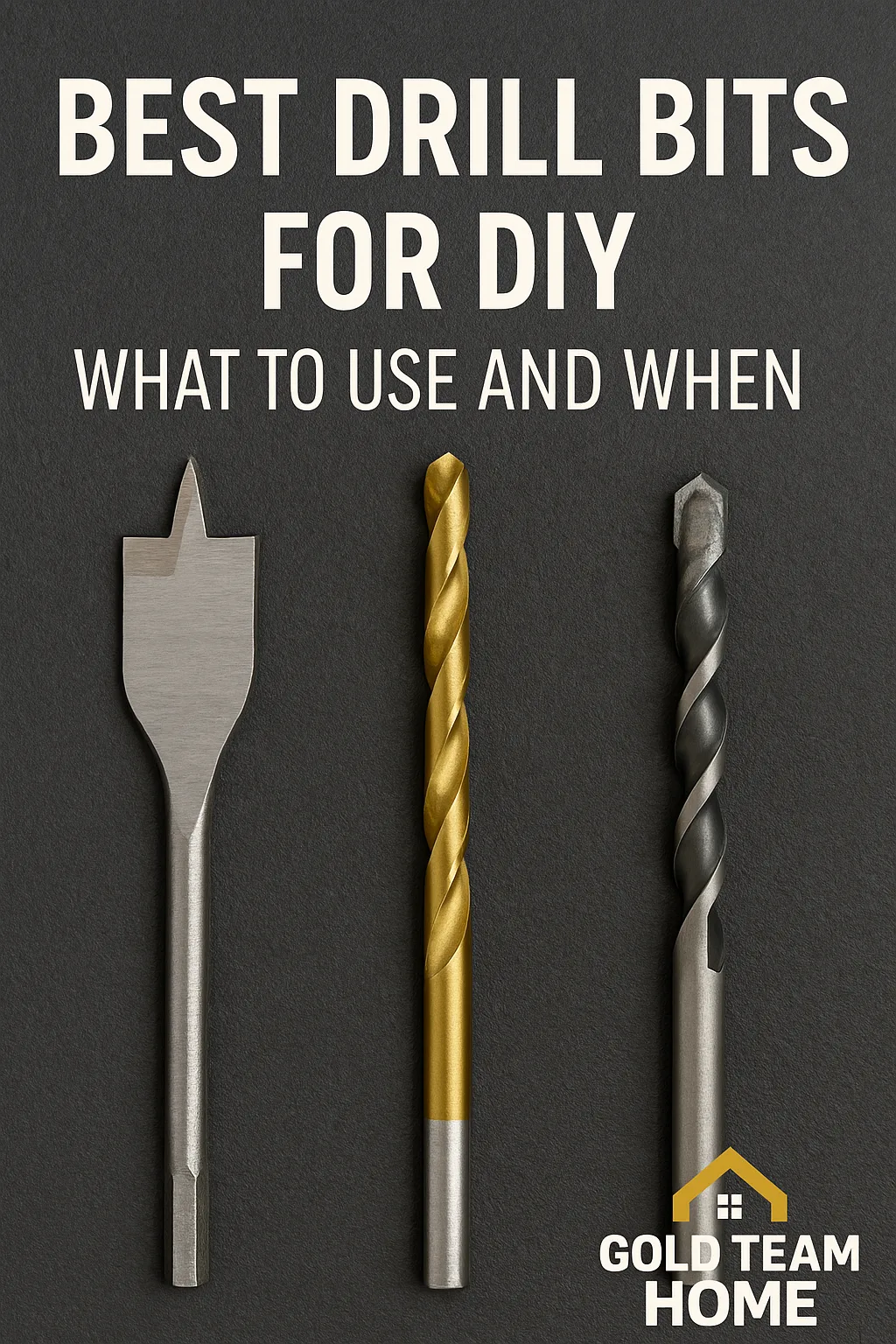New! DIY Project Planner. Plan smarter, skip the spreadsheets. Start Your Free Trial Today →

Looking for the best drill bits for DIY projects — but tired of guessing which ones actually work? Whether you’re hanging shelves, drilling through tile, or assembling furniture, using the right bit makes all the difference.
In this guide, we’ll break down the most essential drill bits every DIYer should own, what they’re used for, and the best sets worth buying. No more stripped screws, cracked tiles, or wasted time.
This post contains affiliate links, which means we may earn a small commission if you make a purchase through them — at no extra cost to you. It helps us keep the DIY guides free and the lights on over here at Gold Team Home. Thanks for the support!
Not all drill bits are created equal. Here’s what you actually need as a homeowner or DIYer — and when to use each one:
Best For: Wood, plastic, soft metals
DIY Uses: Hanging shelves, pilot holes, mounting brackets
Twist bits are your default, go-to bits. Most sets include them in sizes from 1/16” to 1/2”. They’re great for furniture builds, drywall anchors, and anything light-duty.
Pro Tip: For drywall or wood, twist bits work great — just pair them with the correct anchor size.
Best For: Wood
DIY Uses: Furniture builds, cabinetry, woodworking
These have a sharp center point that helps keep your hole centered — no drifting like with twist bits. Perfect for shelf pins, dowels, and visible holes where you want clean edges.
Best For: Wood
DIY Uses: Running wires through studs, pocket holes, rough drilling
Spade bits are flat and aggressive — great for speed but not clean holes. Use them where looks don’t matter.
Best For: Brick, concrete, cinder block
DIY Uses: Mounting TV brackets, shelves, or fixtures to masonry walls
These have a dull tip and carbide coating. Pair with a hammer drill for best results.
Need help drilling into masonry? Check out our post on how to drill into brick, block, or concrete.
Best For: Ceramic tile, glass
DIY Uses: Towel bars, shelves, and mounts in bathrooms/kitchens
These often have spear-pointed tips and need low pressure + slow speed. Do not use hammer mode — it will crack tile instantly.
Best For: Sheet metal, plastic, soft PVC
DIY Uses: DIY enclosures, wall plates, upgrading outlet boxes
Step bits increase hole size incrementally — great for when you don’t know exactly how big the hole should be yet.
Best For: Wood
DIY Uses: Pre-drilling for cabinet hardware, furniture
These bits create a cone-shaped hole so your screw head sits flush with the surface. Helps prevent splitting and gives a clean finish.
Whether you want a starter set or something more complete, here are our favorite options:
Why We Like It:
Why We Like It:
Why We Like It:
| Material | Best For | DIY Use Example |
|---|---|---|
| High-Speed Steel (HSS) | General use – wood, plastic, soft metal | Hanging shelves, furniture builds |
| Titanium-Coated | Longer life, less friction | Repeat-use holes, cabinetry |
| Carbide-Tipped | Masonry, tile, glass | Mounting shelves to brick or tile |
| Cobalt | Hardened steel, metal drilling | Advanced DIY, automotive or plumbing |
Start with this basic range:
Need anchor help too? Check out our guide on what size wall anchors to use.
Most of your DIY frustration comes from using the wrong bit for the job. Invest in a couple solid sets now and you’ll avoid cracked tile, burnt motors, and stripped screws later.
Start with a titanium twist set, add masonry and countersinks, and build from there. Your drill is only as good as what’s in the chuck.